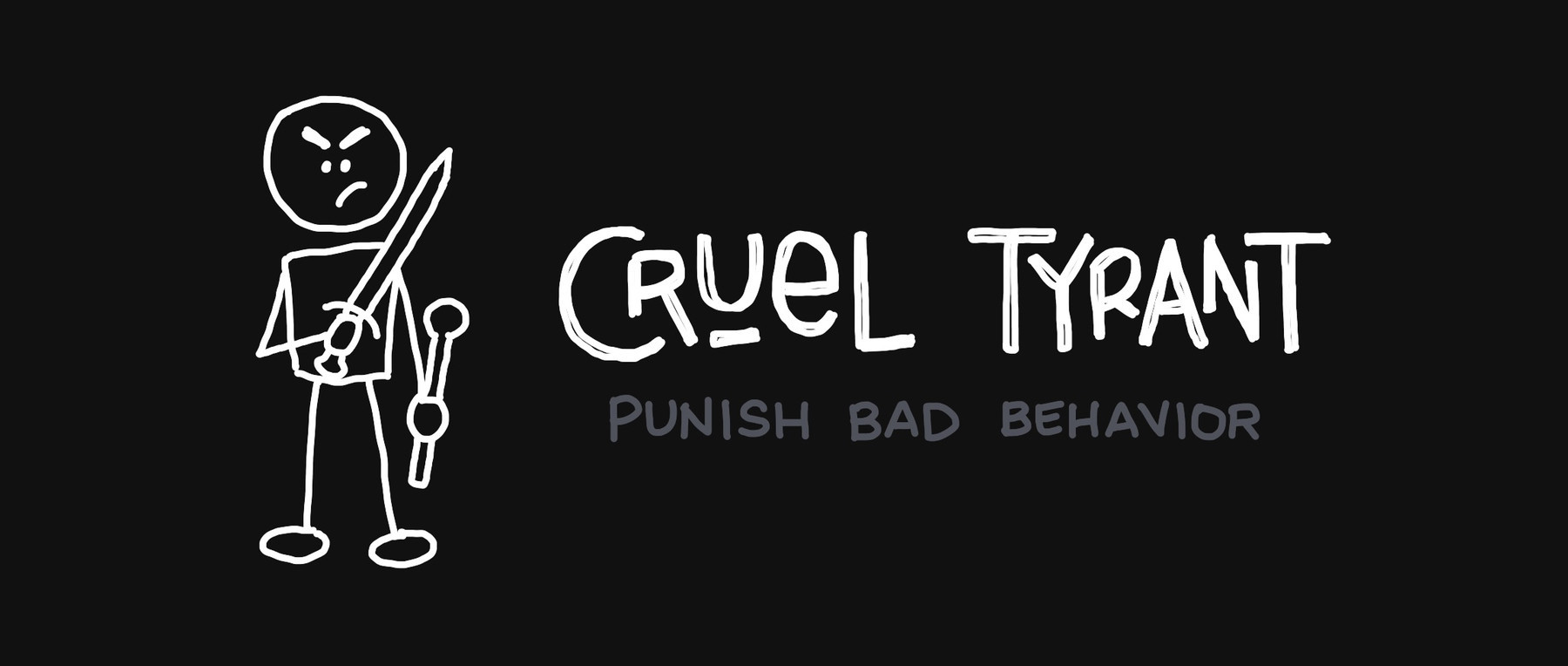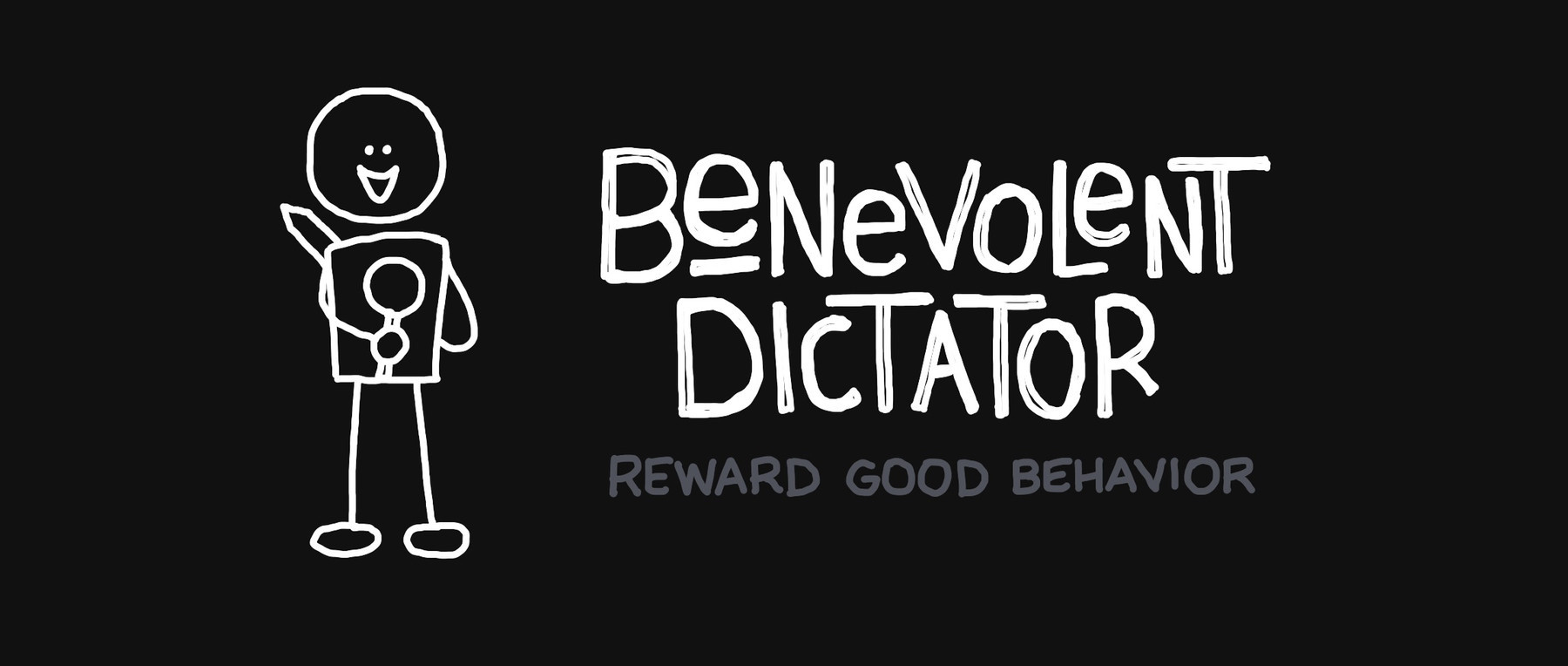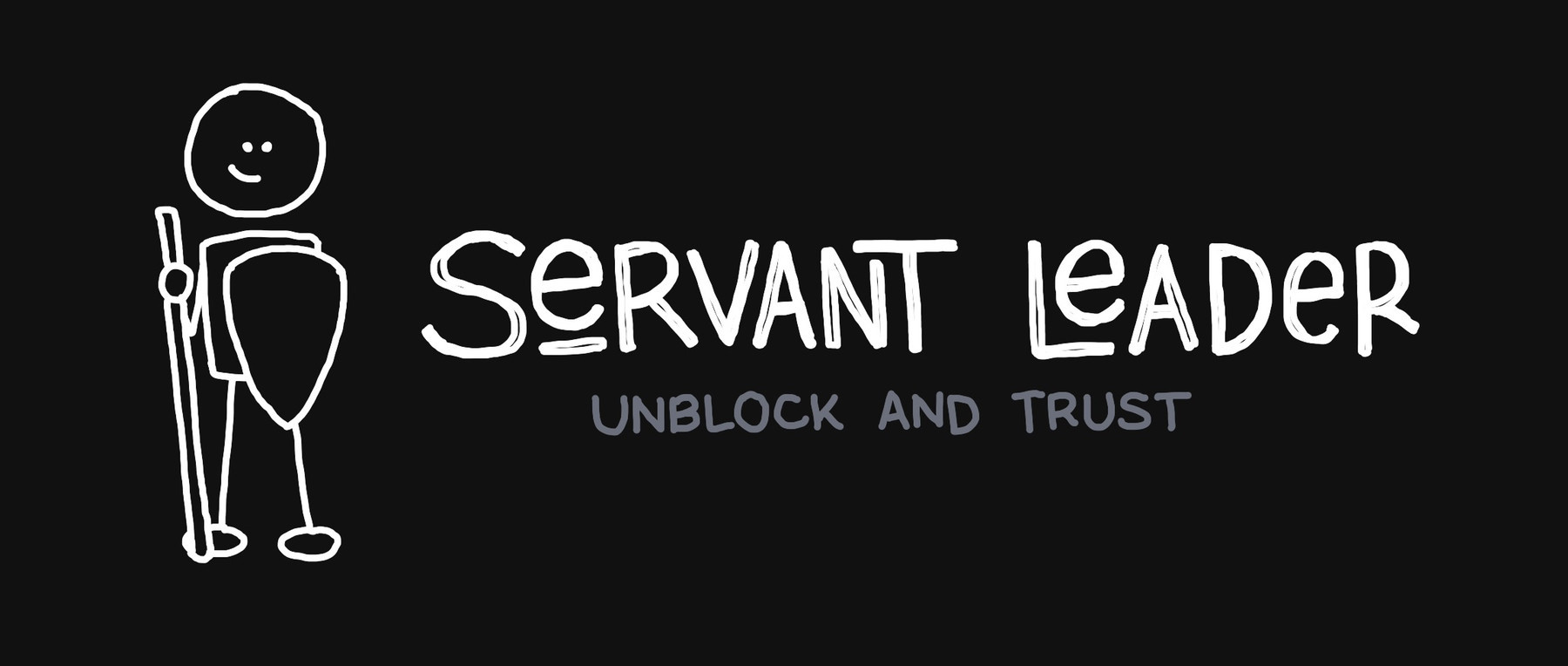Most people transition through three stages of leadership, whether consciously or not. These stages are the cruel tyrant, the benevolent dictator, and the servant leader.
Note: This is part of a series sharing my thoughts on leadership. Read the introduction here.
As I start this article, I want to begin with a disclaimer. While the concepts here are similar to many leadership theories that exist, the stages that I have identified are completely of my own making. I say this not to claim originality, but rather as an advisory to the reader to not consider these stages to be official or based on extensive research. Any shared terminology with other leadership theories is coincidental. These ideas have been useful for me as I consider how to grow as a leader, and I hope they can be helpful to others as well.
The stages of leadership that I have identified can also be thought of as leadership styles. I like using the word “stage” to describe them, because I think there is a natural progression through these stages. Ideally, we can skip the early stages, or pass through them as quickly as possible. At times, however, we may backslide into those early stages, and need to be aware of them and recognize when we have fallen into that mindset and intentionally move forward.
The three stages of leadership that I have come up with exist on a spectrum, from worst to best. In this article, I will explore each one in detail. The stages are the cruel tyrant, the benevolent dictator, and the servant leader.
Cruel tyrant
A defining characteristic of a leader who is a cruel tyrant is that they seek to influence others by punishing bad behavior. They resort to threats or wield positional authority to ensure that all of their demands are met. They focus not on people, but on the behavior of those people, and try to shape it into what they want to happen.
This first stage that many leaders go through is almost all based on fear. The leader both feels and inspires fear. They may be afraid of the responsibility and feel inadequate. That fear can manifest through an attempt to control the output of the team and even the individuals themselves.
In many ways, this fear is understandable. Often, a new leader is promoted because of excellence as an individual contributor. But now they are no longer responsible for performing great work, they are responsible for ensuring that others perform great work. They may see that what they are measured on is results, and so they focus completely on results. They might not know how to motivate or inspire others to achieve those results, and so they fall back on the only thing they know.
This leader often insists on people working in a certain way, at a certain location, during certain hours because without this certainty, they feel helpless and out of control. They create a culture of mistrust and breed resentment among individuals. They rule with an iron fist and demand compliance. They may feel that people respect them, but in reality they are merely feared.
Most of us know what it is like to work with a leader in this stage, and find the experience demoralizing, demotivating, and dehumanizing.
Benevolent dictator
The mark of a benevolent dictator is that they try to influence others by rewarding good behavior. Again, they focus not on people, but rather their actions and try to shape them into something more desirable. They seem to be offering a lollipop, but in fact hide the sword that is implied in failing to measure up.
This next stage that most leaders go through is really just a more positive twist on the same theme as the cruel tyrant. In this stage, the leader is still focused on behavior and results, but seeks to influence others through reward instead of punishment. Because this leader is using rewards, they often think that they are a more positive leader and having a better impact on others. This is probably true—behavior is modified better through positive rather than negative consequences.
But there are still many problems with this approach to leadership. Treating people as if they are only as important as the results they provide is demeaning and leads to objectification. Those who are led in this way begin to spend their time and energy finding ways to get ahead or to get credit for positive results. Whereas with a cruel tyrant, people tend to just look out for themselves and try to not stick out or be noticed, a benevolent dictator encourages people to put others down in an effort to raise themselves up.
Motivation plummets when people are led in this way. Instead of allowing intrinsic desire and satisfaction to drive someone to excel, work is turned into a transaction. The only effort that will be expended is that required to qualify for the reward.
Again, most of us know what it feels like to work with a leader in this stage. We become more concerned with credit than results and our soul seeps away in the race to be seen.
Servant leader
The quality that distinguishes a servant leader is that they unblock and trust people. They see others as people, and take the time to get to know them and understand their strengths and limitations, and work to shape the environment to foster success. Only when operating this way can a leader truly perform their role to protect and provide.
This final stage is one of the most elusive. Unfortunately, it is not a destination. By its very nature, it is constantly changing and requires continuous work and investment to maintain. It is so easy to slip back into one of the previous stages, and so we must be vigilant and learn what our own warning signs of regression look like.
To be a true servant leader requires someone to be comfortable with themselves enough to know how they can help and lift others, and also comfortable enough with others to get out of their way and let them work. This leader is focused on empowering people, and leads through trust.
When problems arise, such as performance issues, the servant leader first looks at themselves to question whether they have provided sufficient clarity and training. Often, the first step to resolving issues like this is to better understand the perspective of the person who appears to be struggling. If the leader has done everything necessary, often they will probe into the life of the individual and see if there are challenges or circumstances affecting the person’s ability to perform.
This does not mean that a leader ignores all problems or difficult conversations, or that they never have to work through formal discipline. This leader recognizes that they must protect the team as well as individuals, and sometimes protecting the team means ending a formal work relationship with an individual, and ideally assisting them to find a path that could be a better fit.
As a servant leader, we recognize that we do not matter any more, or any less, than anyone else on the team. We have a different role to perform, and we can best serve the team by fulfilling that role in the best way we know how. We don’t have to possess all the answers—usually the best solutions come from the team. We need to work to recognize and elevate the humanity and vulnerability of each member on the team so that together success can be achieved.
Conclusion
As leaders, we need to become acutely aware of the style of leadership that we exhibit. Almost all leaders move through the three stages of cruel tyrant, benevolent dictator, and servant leader. Sometimes the transition between stages is unconscious, but we can work to be more intentional about the kind of leader that we want to be.
In the final article in my series on leadership, I will be exploring the effects of the stages of leadership.



